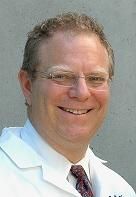Stanford symposium showcases early applications of new technology
Technical innovations that were first rolled out at the 2008 RSNA six months ago will be reintroduced to the medical imaging community driving improved clinical applications highlighted at the 2009 International Symposium on Multidetector-Row CT May 19 to 22.
Technical innovations that were first rolled out at the 2008 RSNA six months ago will be reintroduced to the medical imaging community driving improved clinical applications highlighted at the 2009 International Symposium on Multidetector-Row CT May 19 to 22.
This year's symposium in San Francisco will be held during one of the most productive years ever for CT innovation. Course codirector Dr. Geoffrey D. Rubin expects the initial experience with these new products to enrich 160 lectures by 70 faculty members.
The GE Lightspeed CT 750 HD could have a sweeping effect on virtually every clinical area addressed by multislice CT, according to Rubin. The scanner uses garnet detectors, a unique x-ray source, and reconstruction software innovations that enable high-resolution imaging with lower radiation exposure, he said.
Though it is too early to expect comprehensive reviews, attendees can look forward to an introduction to studies demonstrating the device's effect on imaging and diagnostic efficacy for selected clinical applications.
New applications are expected to emerge from Philips' and Toshiba America Medical Systems' use of wide area detector technologies. The 256-slice Philips Brilliance iCT and 320-slice Toshiba Aquilion One promise huge theoretical benefits and a few performance tradeoffs that will be described in San Francisco, Rubin said.

"We hope to get a good sense of what role wide area detectors will play," he said in an interview.
The second-generation Siemens dual-source Somatom Definition with Flash technology will also influence presentations, Rubin said. It features high-pitch helical acquisition that enables the scanner to capture a 3D imaging volume covering the entire chest in a single second or the entire heart in a third of a second.
The ability to acquire the whole heart in a single heartbeat without conventional retrospective gating promises to reduce radiation exposure and eliminate beat-to-beat misregistration, according to Rubin.
"There is a lot of excitement around that, particularly the radiation dose reduction elements," he said.
Flash technology also opens the door to perfusion CT and other molecular applications for the technology. Brain perfusion for the emergency evaluation of ischemic stroke and emerging body applications in the lungs, liver, kidneys, and pancreas will draw attention.
Rubin is also looking forward to seeing how presentations at this year's symposium address the bread-and-butter applications that dominate the modality's use in clinical practice. Cardiac imaging has attracted considerable R&D attention because of the technical challenge involved with characterizing coronary plaques and other subtle abnormalities in a moving organ. Yet cardiac imaging still accounts for only a small slice of the total patient load for CT.
An important measure for the relevance of the new wave of innovations will be how they ultimately help improve clinical outcomes for cancer and stroke patients and whether the diagnostic accuracy of abdominal and pelvic applications are improved.
Testing that is a tall order for technologies that are only a few months out of the box, Rubin admits. But he would be satisfied to see early studies showing what new characteristics of disease these emerging technologies can reveal.
Rubin promised that at a minimum, the 2009 Stanford conference will be forward-looking. At its best, it will set the course toward outcomes studies that will ultimately demonstrate the clinical value of diagnostic imaging's new CT technologies.
Study with CT Data Suggests Women with PE Have More Than Triple the One-Year Mortality Rate than Men
April 3rd 2025After a multivariable assessment including age and comorbidities, women with pulmonary embolism (PE) had a 48 percent higher risk of one-year mortality than men with PE, according to a new study involving over 33,000 patients.
The Reading Room: Racial and Ethnic Minorities, Cancer Screenings, and COVID-19
November 3rd 2020In this podcast episode, Dr. Shalom Kalnicki, from Montefiore and Albert Einstein College of Medicine, discusses the disparities minority patients face with cancer screenings and what can be done to increase access during the pandemic.
Predicting Diabetes on CT Scans: What New Research Reveals with Pancreatic Imaging Biomarkers
March 25th 2025Attenuation-based biomarkers on computed tomography (CT) scans demonstrated a 93 percent interclass correlation coefficient (ICC) agreement across three pancreatic segmentation algorithms for predicting diabetes, according to a study involving over 9,700 patients.
Can Photon-Counting CT be an Alternative to MRI for Assessing Liver Fat Fraction?
March 21st 2025Photon-counting CT fat fraction evaluation offered a maximum sensitivity of 81 percent for detecting steatosis and had a 91 percent ICC agreement with MRI proton density fat fraction assessment, according to new prospective research.